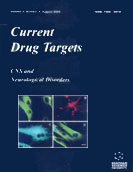Abstract
Noxious thermal, mechanical, or chemical stimuli evoke pain through excitation of the peripheral terminals called nociceptor, and many kinds of ionotropic and metabotropic receptors are involved in this process. Capsaicin receptor TRPV1 is a nociceptor-spesific ion channel that serves as the molecular target of capsaicin. TRPV1 can be activated not only by capsaicin but also by noxious heat (with a thermal threshold > 43°C) or protons (acidification), all of which are known to cause pain in vivo. Studies using TRPV1-deficient mice have shown that TRPV1 is essential for selective modalities of pain sensation and for thermal hyperalgesia. One mechanism underlying inflammatory pain which is initiated by tissue damage / inflammation and characterized by hypersensitivity is sensitization of TRPV1. In addition to TRPV1, there are five thermosensitive ion channels in mammals, all of which belong to the TRP (transient receptor potential) super family. These include TRPV2, TRPV3, TRPV4, TRPM8 and TRPA1. These channels exhibit distinct thermal activation thresholds ( > 52°C for TRPV2, > ∼34-38°C for TRPV3, > ∼27-35°C for TRPV4, < ∼25-28°C for TRPM8 and < 17°C for TRPA1) and are expressed in primary sensory neurons as well as other tissues. Some of the thermosensitive TRP channels are likely to be involved in thermal nociception, since their activation thresholds are within the noxious range of temperatures.
Keywords: trp channel, pain, capsaicin, nociception, thermosensation
 8
8

















